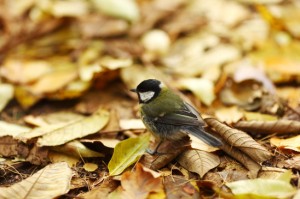
8 Easy Things to Do That Will Attract Birds
Posted by Grange Co-op on 11th Feb 2015
1) Create a brush pile. Take fallen and pruned branches from trees and shrubs on your property and loosely stack them in an area where they will not be obtrusive to you or your neighbors. The pile should be about 6 ft. x 6 ft. to attract the birds. It should always be airy and have lots of open spaces that birds can flit in and out. Birds will use these piles for cover against harsh elements, they will eat the insects among the decaying branches or on the ground beneath the pile and any seeds that may become trapped in the pile from being blown by the wind. Brush piles tend to be used most in the winter. Used Christmas trees added to the brush pile make excellent winter cover.
2) Put up a bird planting wire. Let the birds choose and plant the plants they like. String a clothesline or sturdy wire out in the open between two points, (trees or posts). Make it at least 10-20 feet long and over 6 feet high so no one will walk into it. The birds will perch on the wire and while there, their droppings will fall below. Over time, you will get a selection of berry or seed producing plants that the birds obviously like. Be aware that some of the plants that may arrive via the birds may be invasive exotics that will need to be weeded out.
3) Let dead trees stand. Dead trees and limbs are a wonderful source of food and homes for birds. Often there are insects that loosen the bark to feed and lay eggs in the dead wood providing food for birds. The softened wood also makes excavating holes for nesting easier. They also provide a space for the acorn woodpecker to stash acorns becoming important "grainery trees". Of course, some consideration needs to be given to safety, removing limbs that may endanger people or buildings if they should fall.
 4) Leave leaves alone in garden and woodland areas. Fallen leaves provide nutrients to the soil and as they decay and accumulate, form an insulation layer over the soil that keeps it warmer and moisturer. Insects and other microbes thrive under these conditions. There are many garden birds that love to feed in leaf litter, including thrushes, towhees and many sparrows.
4) Leave leaves alone in garden and woodland areas. Fallen leaves provide nutrients to the soil and as they decay and accumulate, form an insulation layer over the soil that keeps it warmer and moisturer. Insects and other microbes thrive under these conditions. There are many garden birds that love to feed in leaf litter, including thrushes, towhees and many sparrows.
5) Create a dust bath. Choose a sunny area about three foot square near a feeder. Clear it of vegetation and hollow it out about 2-3 inches. You can fill it with fine dust if needed, equal parts sand and topsoil. You can rim the perimeter with rocks or wood timbers if you like. You’ll find many birds taking a dust bath to help rid themselves of mites and other parasites and to fluff their feathers to keep them in top condition.
6) Create a hedge row. A hedgerow is a long line of shrubs and small trees at the border of a field or lawn. Birds will use hedgerows in all seasons providing food, shelter and nesting sites.
7) Provide nesting material in spring. Birds will often use short pieces of string, hair, fur from dogs, feathers, dry grass, pine needles, and bark strips to line their nests with. You can also buy nesting material. Place the materials in a wire cage, such as a suet basket, and hang it from a lower limb of a tree.
8) Provide a water feature. Whether simple, like a trash can lid turned upside down placed in the ground, a birdbath on a pedestal, or a feature as elaborate as a water garden, birds are attracted to water for bathing and drinking. Any birdbath that you create must have shallow areas near the edge that the birds can step into. If your water feature is deeper than 1-2 inches place flat rocks around.
